The Amateur Mycologist - Myxomycetes (Plasmodial or Acellular "Slime Molds") And My Ongoing Moist Chamber Experiment OR How To Grow Your Own Slime Mold In A Few Easy Steps
These posts are not for foraging. They are intended for entertainment and intellectual satisfaction only. These posts are not a field guide nor comprehensive in any way - their accuracy is not assured in any way. Do not eat wild mushrooms unless you are a professional, have substantial professional assistance or have a wealth of personal experience with a specific species. Do not make any foraging decisions based on these posts. To do so could be dangerous or life threatening.
This post does not include edibility or toxicity information
Edit: So far two myxomycota related posts - and two helpful reddit users who have stepped into broaden my knowledge and point out my mistakes. I've already changed a detail in the chart regarding the transformation from Zygote to plasmodium - and I am going to go through now and change some other details. But, as it was pointed out to me, it's really important to recognize that myxomycota and myxomycetes are totally different from fungi in fundamental ways and only connected to their study by tradition more than biological or evolutionary similarity. I have also added another source from the university of Hawaii.
Lastly, in an effort to maximize my viewing audience, I have continued to include these posts in #homesteading - although I realize slime molds are not directly related. However, they are very much something you may encounter as a homesteader, even with regularity during the right seasons. Nonetheless, if members of that community feel this post does not belong, please let me know in the comments or on steemit.chat and I will remove it.
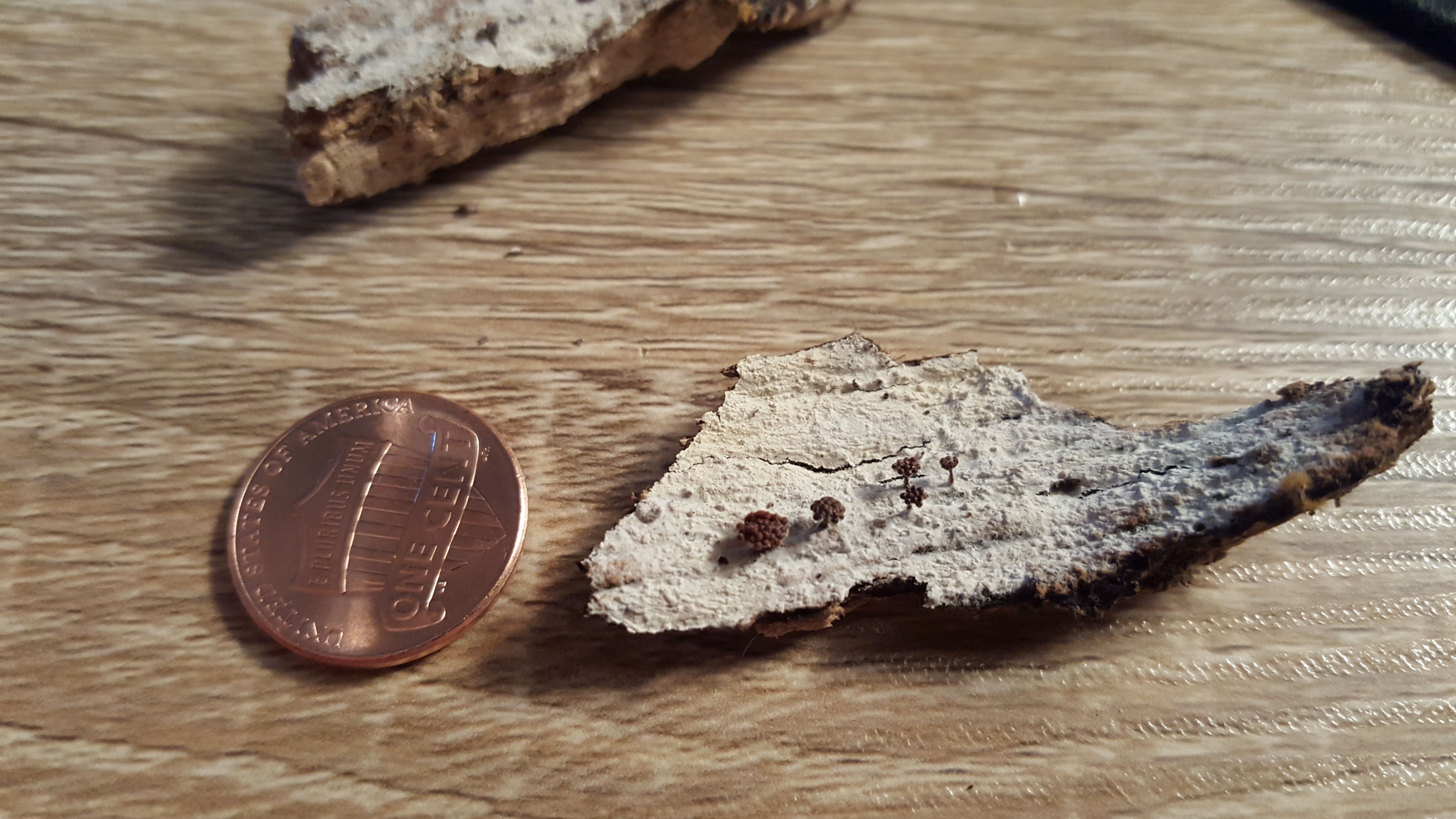
Myxomycetes are my new pet project.
To be clear - this post is only about plasmodial, or acellular slime molds. They are referred to as plasmodial because they eventually manifest as a plasmodium, which is basically mass of slime filled with multiple cell nuclei. These nuclei are undivided by cell walls, and therefore the whole thing can, in a sense, be considered a single celled, multi-nucleate organism - aka "acellular".
After finding my first slime mold, Lycogala epidendrum hiding unexpectedly in plain site, masquerading as a strange puffball fungus, my interest was peaked. I wrote my post on the find and tried to explain things as best as I could.
But, as is often the case with ignorance, I was not quite as familiar with the topic as I thought I was. A very knowledgeable reddit user on /r/mycology pointed out some errors in my post about the nature of the myxomycetes life cycle and I went back and tried to fix things. However, the sheer unbelievability of myxomycetes, and the ways that they live, piqued my interest.

So I bought a good introductory book on the subject.
There are a couple of options available for the incipient slime mold enthusiast, but "Mycomycetes: A Handbook of Slime Molds, By Steven Stephenson and Henry Stempen (the "Handbook" from here on out) seemed like the most practical and was the best reviewed by a small margin.
It may not be the definitive literature on the topic - but I found it highlight enlightening and, as it turns out, practically helpful. Of course, I still know almost nothing - and this continues to be a learning experience, as it always will be.
First, it actually functions as a simple field guide for several of the most ubiquitous slime mold species - oneof which are featured above and which I will go into this Friday.
Second, the book provides a readily available resource for understanding the life cycle of slime molds - which are not Fungi, but have a history of being studied alongside fungi. (Handbook, p.15)
Here's a mock up I made of what that life cycle consists of for Plasmodial or acellular Slime Molds. Full credit goes to the Handbook for this, which is a clear play on a black and white chart therein.
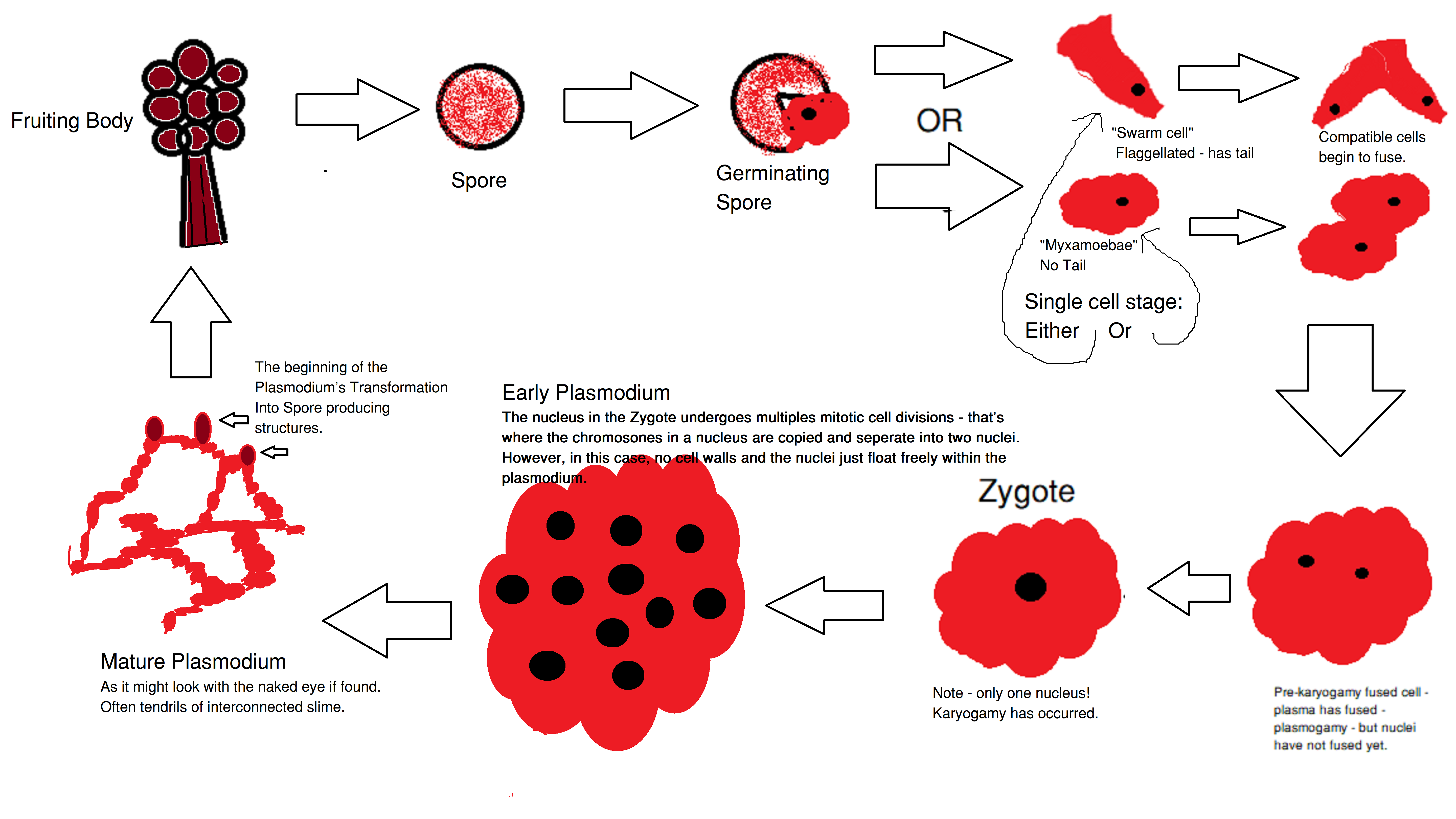
This chart is NOT PERFECT - but it gives a basic generalized overview of the life cycle of a acellular slime mold
This chart also leaves out some things. For instance the chart does not mention the fact that in their unicellular stage acellular slime mold cells can morph into microcysts for indeterminate periods of time in order to survive unfavorably harsh conditions. Nor does it mention how the mature plasmodium can perform a similar hibernation-esque stunt, en masse, taking on a resistant form called sclerotium . Or how the unicellular structures can change from flagellated to unflagellated, or vice versa if there is free water available or needing to be traversed.
It also ignores other types of slime molds beyond plasmodial/acellular slimemolds. But those molds are a whole other can of worms that I know even less about than acellular slimemolds, which I know fleetingly little about.
In addition to species identification and general understanding, my favorite addition from the book is my ongoing moist chamber experiment!
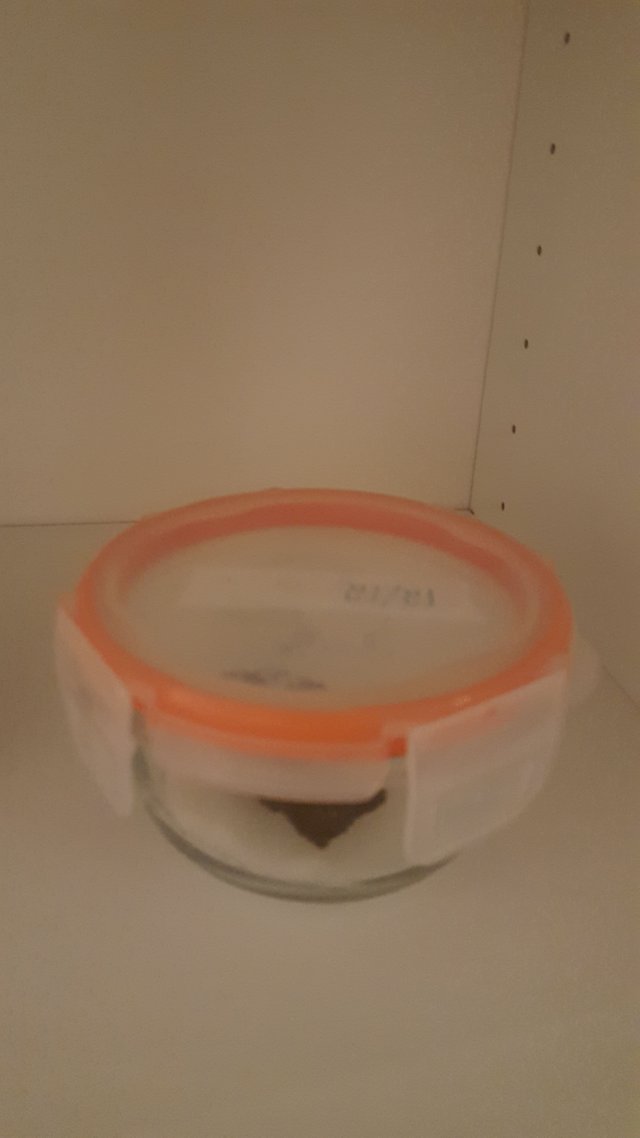
It turns out that myxomycetes spores can be found almost anywhere there are trees
No, make that ALMOST ANYWHERE. They are cosmopolitan - meaning that unlike fungi which are often but not always restricted to a specific region of the world - the same species of slime molds can be found in similar ecosystems around the globe.Moreover, they can grow on a variety of mediums ranging from dung to leaves to trees and beyond.
For my purposes, all I care about at the moment are acellular slime molds that can be found on the bark of trees. In their unicellular and plasmodial stages of life, the slime mold will move around its environment, engulfiing bacteria and other sources of organic nutrients and digesting them by phagocytosis - direct absortion. Once enough nutrients have been consumed, and/or when the available nutrients have been used up, if conditions are right the slime mold will morph into sporangia, or spore bearing structures.
Now, many slime molds are difficult to find in the wild - however since the spores are all over the place they can be cultivated to maturity artificially using a moist chamber set up. Biologists have used this fact to their advantage in the study of myxomycetes by augmenting their wild finds with specimens grown in the laboratory!
The process could not be much simpler. Take a clean container and place a piece of tree bark inside of it on top of a paper towel. Then pour in enough distilled water to cover everything and leave it for 24 hours. Come back and pour out the excess water. Then you leave the piece of bark, outer side facing up, in the closed container for several weeks, checking every few days and moistening when necessary to prevent drying out. A petri dish is ideal for this set up - but I haven't gotten them yet and so I used a tupperware.
The goal is to coax the slime mold spores to germinate and mature all the way to the final sporangia phase of the life cycle and, apparently, it is a highly effective and reliable method to achieve that end.
My piece of bark has been sitting now for almost a week. Take a look.
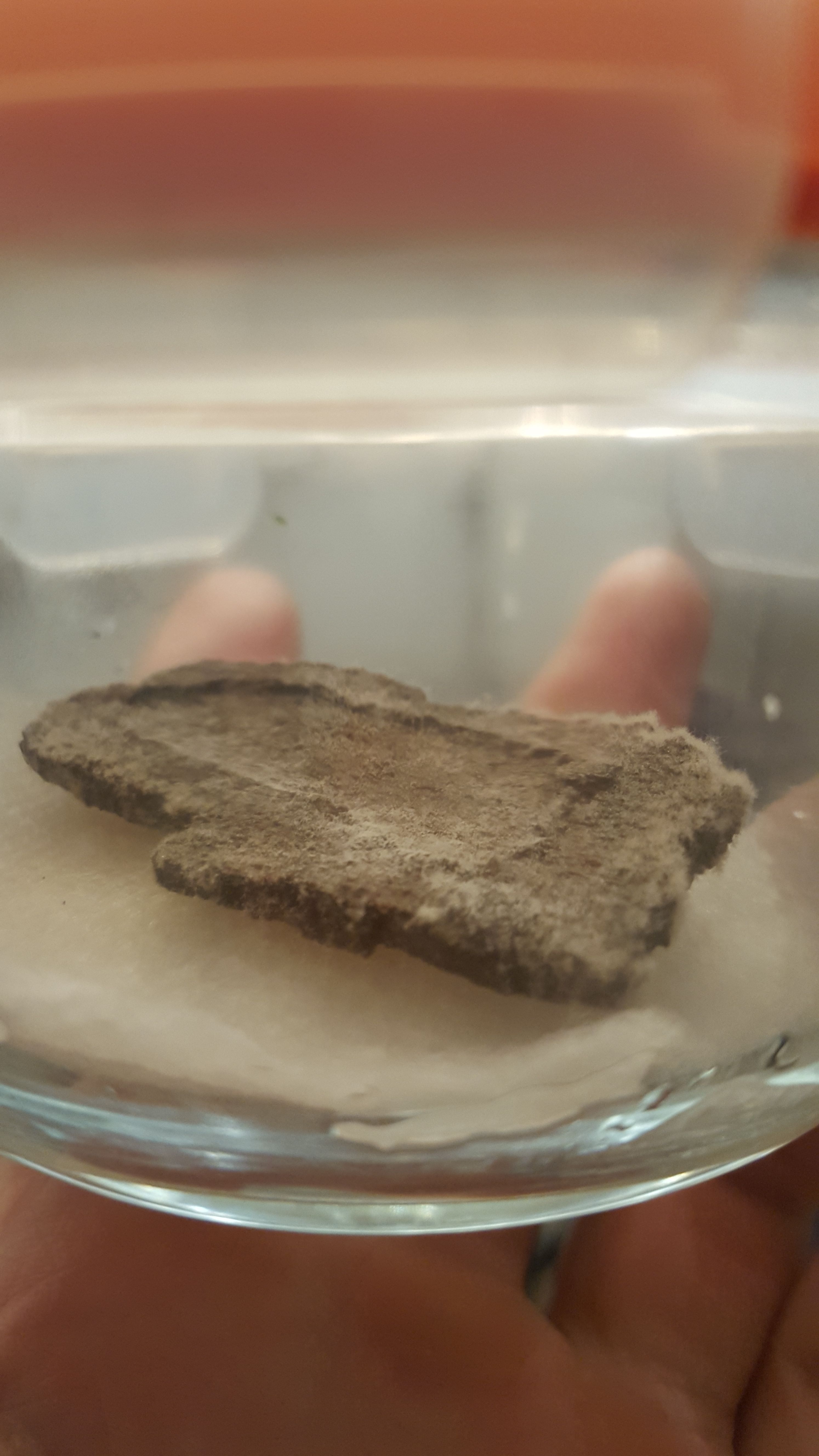
Already there is definitely something growing on that bark. Take a look at the "before" picture:
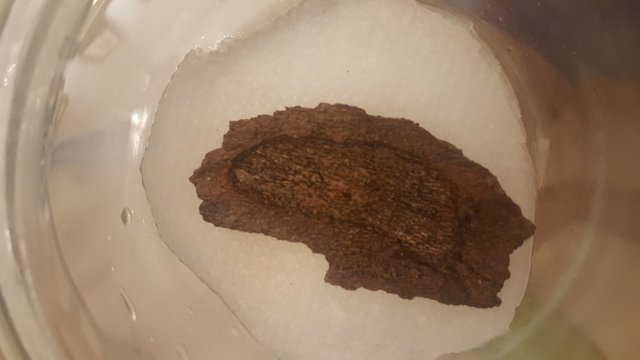
This is, I believe, Sycamore bark.
I picked that because the tree is right outside my house and because Sycamores tend to shed their very thin barks naturally, so it was easy to take a small piece that was already shedding without causing any damage to the tree. (It's important if you do this to make sure you don't damage the tree from which you take the bark or you might open it up to infection.)
Now, two problems here. One, the Handbook specifically says that thin barked trees tend to be less productive in moist chambers - which might have something to do with their being fewer nooks and crannies for spores to hide in.
Second, I did not sterilize my chamber or the paper towel. This is not a huge deal - the slime molds will hopefully still show up. However, because of the ubiquity of slime molds in the environments, the failure to sterilize my work surfaces means any results I get cannot be used to accurately assess which species grow on the tree in front of my house. In order to assess the local myxomycetes fauna, I would have to be a lot more careful about sterilization and sample isolation. To be clear, the goal is not to sterilize the selected growth medium - but to sterilize the container and liquid to make sure you are only growing spores found on the original piece of wood.
But for now, my only goal is to see whether it works at all. If I can get myxomycetes to grow in a controlled environment in my home, then my ability to examine these astonishing lifeforms will grow exponentially. Plus, I'll be able to grow them year round, even in the dead of winter.
Next time, moist chamber update and a species post for Metatrichia vesparium - the truly beautiful, grotesque monstrosity pictured at the top. Things get weird.
THIS POST IS NOT INTENDED FOR FORAGING PURPOSES AND TO USE IT FOR THOSE PURPOSES WOULD BE DANGEROUS. DO NOT HUNT WILD MUSHROOMS WITHOUT RELYING ON A COMBINATION OF PROFESSIONAL FIELD GUIDES, IN PERSON PROFESSIONAL GUIDANCE, OR IN PERSON GUIDANCE BY SOMEONE TRUSTWORTHY WHO HAS COPIOUS LOCAL, SPECIALIZED MUSHROOM HUNTING EXPERIENCE. FAILURE TO DO SO CAN RESULT IN GRIEVOUS PERSONAL HARM OR DEATH.
Photos Are My Own
Microscopic photos were taken using an AMScope M150B entry level microscope. If you use microscopes, I'm quite sure you've never heard of this model - but its cheap and available on Amazon. The camera lens is also AMScope, MD35 - by far their crappiest microscope camera. But, still capable of material, relevant, and in some cases, dispositive, data collection. Lastly it should be noted that the precise magnifications are not easily deduced using the camera - but based on relative spore sizes compared to known microscopic photos from Kuo and other sources, I estimate 40, 100 and 400x.
Information Sources
[1]"Myxomycetes - A Handbook of Slime Molds" by Steven L.Stephenson and Henry Stempen
[2]Gary Lincoff, Audobon Society North American Mushroom Field Guide
[3]University of Hawaii on Myxomycota
Cool moving onto new ground, thats always exciting, I did enjoy your previous post about Slime moulds and as always it's great to be learning even more now. Thanks for sharing your chamber experiment, it's one I can actually try out with my kids. Keep up the great work.
I've yet to figure out why you don't get more views and comments on your posts. You do a fantastic job.
Get out there and network more man! You deserve more readers for work of this level of quality!
I appreciate your saying that! I've given it a lot of thought actually and I think the reasons are twofold:
You're definitely right - I am not the best online - or irl for that matter - networker. Early on, when I was writing more sporadically or in less detail - and still learning about the whole steemit process - I spent a lot more time on various chatrooms speaking to people - but as time has passed I find it more and more difficult to engage, time wise, in chat rooms. Best case in point is the steemstem room, filled with people I like talking to, and yet still I rarely get in there. I find that my schedule often just allows me to start a conversation but rarely get in much depth as there are big gaps between my availability to log in and talk.
Additionally, and maybe even more importantly, this is a super niche topic and, even if I succeed in making it accessible and visually interesting, the fact remains fungi is just not an active interest for most people, which makes it more difficult to accrue natural views. The view and comment count generally skyrocket after a post breaks $100, but even then it's usually a select few who have something say about a topic so specific.
At the end of the day though, I count my blessings every single post. In truth, no matter how high the quality is, the support these posts already receive, and some of my stories receive, given the subject matter, absolutely blows me away.
Hello @dber. What matters is that you spend time in the experiment as you have been doing. Discover and learn Congratulations, friend.
You're not wrong - my time here's been extremely edifying for me in a number of ways.
Your effort is remarkable.
esta bueno la nota
¡Gracias!
Thank you friend
Excelent work. I hope others will apreciate your quality work. Good job !!!
Thank you for the kind words!
Good post. Are you scientist?
Only an amateur :)
good post and thanks for info @dber
♥♥♥very well post dear big brother @dber and good job And pray for steamit to be successful♥♥♥